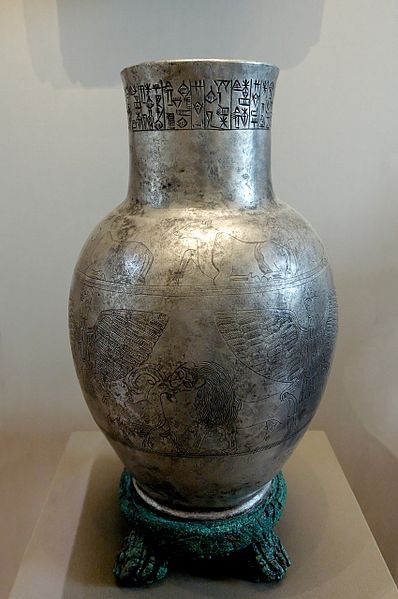Bau, also read Baba or Babu (cuneiform: 𒀭𒁀𒌑 dBa-U2), was a Mesopotamian goddess. The reading of her name is a subject of debate among researchers, though Bau is considered the conventional spelling today. While initially regarded simply as a life-giving deity, in some cases associated with the creation in mankind, over the course of the third and second millennia BCE she also acquired the role of a healing goddess. She could be described as a divine midwife. In art she could be depicted in the company of waterfowl or scorpions.
Bust of a goddess, perhaps Bau, from Girsu. Louvre Museum.
A seated figurine of Bau from Ur, on display in Iraq Museum.
A tablet mentioning sacrifices made to various gods worshiped in the state of Lagash, including Bau.
Statue of Gudea, a king who elevated the rank of Bau in the local pantheon of Lagash.
Lagash was an ancient city state located northwest of the junction of the Euphrates and Tigris rivers and east of Uruk, about 22 kilometres (14 mi) east of the modern town of Al-Shatrah, Iraq. Lagash was one of the oldest cities of the Ancient Near East. The ancient site of Nina is around 10 km (6.2 mi) away and marks the southern limit of the state. Nearby Girsu, about 25 km (16 mi) northwest of Lagash, was the religious center of the Lagash state. The Lagash state's main temple was the E-ninnu at Girsu, dedicated to the god Ningirsu. The Lagash state incorporated the ancient cities of Lagash, Girsu, Nina.
Relief of Ur-Nanshe. At the top he creates the foundation for a shrine, at the bottom he presides over the dedication (Louvre).
Entemena's inscribed silver vase, c. 2400 BC (Louvre)
Eannatum, King of Lagash, riding a war chariot (detail of the Stele of the Vultures). His name "Eannatum" (𒂍𒀭𒈾𒁺) is written vertically in two columns in front of his head. Louvre Museum.
The cuneiform text states that Enannatum I reminds the gods of his prolific temple achievements in Lagash. Circa 2400 BC. From Girsu, Iraq. The British Museum, London








